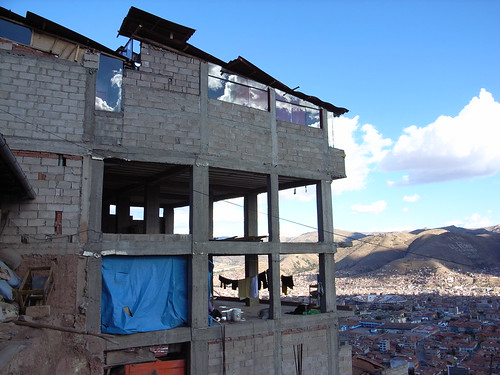 Incomplete buildings are something that fascinate me. The raw backbone of the buildings looks as if it had been never finished or strip naked after a momentarily stopped renovation. To me, the city of the near future definitely looks like this sort of architecture. And this fascination is not just poetic, it's a very recurring encounter in lots of cities due to economic and cultural issues in construction.
Incomplete buildings are something that fascinate me. The raw backbone of the buildings looks as if it had been never finished or strip naked after a momentarily stopped renovation. To me, the city of the near future definitely looks like this sort of architecture. And this fascination is not just poetic, it's a very recurring encounter in lots of cities due to economic and cultural issues in construction.
For example, the picture above has been taken in Cusco, Peru. It nicely reveals how the floors reached different levels of completeness. The one above is a restaurant where I had lunch in august, whereas the two other stories below have a totally different affordance. Sometimes, it's even more fascinating when you have incomplete skyscrapers, falling into despair. Some are totally abandoned, some only partly... with pockets of emptiness. These structures often lead to interesting new forms of socialization that would surely need some time to be uncovered.
If like me you're into this sort of things, you may be intrigued by a french architecture firm called coloco which works on this concept. Régine pointed me to their Skeleton Observatory. It's actually a summary of their exploration, about why the think this architectural typology is important and may play a role in the near future. It eventually lead them to describe projects about "inhabiting the skeletons", i.e. the re-appropriation of abandoned and incomplete architectures. The skeleton becomes and "invitation à l'usage" (i.e. "an invitation to be used"). They even have their own France-based abandoned building to test their hypotheses.
Why do I blog this? cataloguing curious signals about new forms of architecture on a pure exploratory angle.